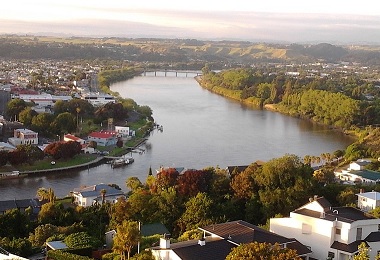Whanganui
General Info
The Whanganui region, located on the west coast of New Zealand’s North Island, is known for its scenic beauty, rich history, and vibrant arts community. The population of the Whanganui region is approximately 65,000. The region is home to the Whanganui River, one of the longest rivers in New Zealand, which holds significant cultural importance to the Māori people.
Whanganui offers a mix of natural landscapes, including forests, rivers, and rugged coastlines, along with a strong focus on arts, culture, and heritage. The city of Whanganui is known for its colonial architecture, creative energy, and relaxed atmosphere, making it an attractive destination for visitors looking for a slower-paced, more intimate New Zealand experience.
Top 10 Tourism Activities
1. Cruise the Whanganui River – Explore the Whanganui River on a boat tour or canoe, a scenic and culturally significant waterway that provides stunning views of the surrounding landscapes.
2. Visit the Whanganui River Road – Take a drive along the Whanganui River Road to enjoy some of the region’s most picturesque views, with opportunities to stop at historic settlements and enjoy the natural beauty.
3. Discover the Whanganui Regional Museum – Learn about the region’s history, including Māori culture and early European settlement, with fascinating exhibits at the Whanganui Regional Museum.
4. Explore Virginia Lake – Take a peaceful stroll or have a picnic by Virginia Lake, a beautiful and tranquil spot in the heart of Whanganui, known for its birdlife and lovely gardens.
5. Visit the Durie Hill Elevator and Tower – Ride the historic Durie Hill Elevator, the only underground funicular railway in New Zealand, and enjoy panoramic views from the Durie Hill Tower.
6. Hike the Mangawhero Forest Track – A scenic and moderately challenging hike in the nearby Whanganui National Park, offering views of native bush and a variety of birdlife.
7. Explore the Whanganui National Park – Hike or camp in the expansive Whanganui National Park, home to ancient forests, rivers, and mountains, providing opportunities for outdoor adventure.
8. Visit the Sarjeant Gallery – Enjoy New Zealand and international art exhibitions at the Sarjeant Gallery, a cultural institution in Whanganui known for its collection of fine arts.
9. Take a Scenic Flight Over the Region – Experience the Whanganui region from above with a scenic flight that offers aerial views of the rivers, forests, and coastline.
10. Relax at Castlecliff Beach – Spend a relaxing day at Castlecliff Beach, a popular spot for swimming, picnicking, and walking, with great views of the Tasman Sea.
Top 10 Natural Attractions
1. Whanganui River – The Whanganui River is not only a stunning natural feature but also holds deep cultural significance for the Māori, making it a must-see natural attraction in the region.
2. Whanganui National Park – A pristine park filled with native forests, rivers, and diverse wildlife, perfect for hiking, camping, and enjoying New Zealand’s natural beauty.
3. Virginia Lake – A scenic and peaceful lake in Whanganui, surrounded by gardens and wetlands, known for its birdlife and as a relaxing retreat for visitors.
4. Mangawhero Forest Track – A beautiful walking track that takes you through the lush forests of the Whanganui National Park, offering scenic views and opportunities for birdwatching.
5. Castlecliff Beach – A quiet and unspoiled beach near Whanganui, ideal for walking, picnicking, and watching the sunset over the Tasman Sea.
6. Tangarakau Gorge – A breathtaking natural gorge located within the Whanganui National Park, offering stunning scenery and a great place for hiking and photography.
7. Mount Ruapehu – A short drive from Whanganui, Mount Ruapehu is a magnificent active volcano that offers skiing in winter and hiking in summer, along with spectacular views.
8. Te Wera Forest – A lush, native forest located in the foothills of the central North Island, known for its walking tracks and birdwatching opportunities.
9. Lake Wiritoa – A serene and scenic lake surrounded by forest, offering opportunities for fishing, boating, and picnicking, located just outside of Whanganui.
10. Whanganui Scenic River Road – A scenic drive along the Whanganui River, offering stunning views of the river, surrounding forests, and quaint rural settlements.
The Whanganui region is a peaceful and picturesque destination for nature lovers, offering plenty of outdoor adventures, rich cultural heritage, and a slower pace of life perfect for a relaxing getaway.
| Top |

